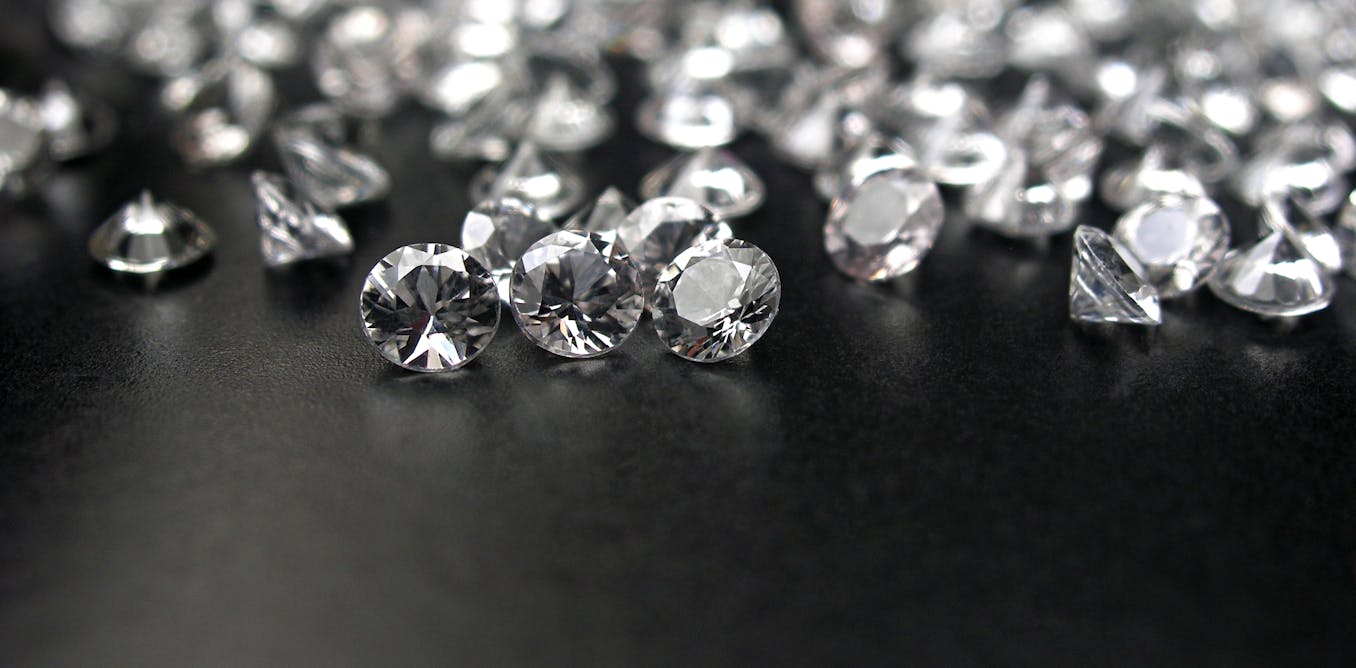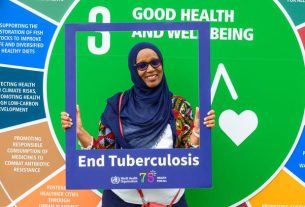Imagine a world where dangerous conditions in unborn babies can be treated with diamonds smaller than a virus, where gold can find and destroy cancer cells with laser-like precision, and where platinum can change the genetic code of tumours. This isn’t science fiction – it’s happening in modern medicine.
For example, scientists are developing a way to treat a rare but often fatal condition in babies called congenital diaphragmatic hernia using nanodiamonds. At just five nanometres wide – about 10,000 times narrower than a human hair – the diamonds can slip through cell walls to deliver hormones to help babies’ lungs grow while they are still in the womb – giving them a better chance at survival.
So far, the treatment has only been tested on lab-grown mini-lungs.
Nanodiamonds are just the latest example of how gemstones, precious metals and rare elements are being harnessed to save lives. They are a potential answer to the problem of finding materials that the body can handle safely – ones that don’t cause immune reactions or toxicity, or break down in the body.
Gold
Gold has been used in medicine for centuries. Archaeologists have found evidence of gold treatments dating back to AD300. Today, gold is still used in surprising ways.
You might even encounter gold at your doctor’s office without realising it. Rapid tests for COVID, flu, malaria and HIV rely on tiny amounts of gold to produce the lines that show test results.
Gold nanoparticles can also help detect cancer early, when treatments work best. They can even act as tiny heat weapons for tumours. Exposed to near-infrared light, they heat up and destroy cancer cells while leaving healthy cells unharmed.
Gold is still used in dentistry, though less often as patients prefer tooth-coloured fillings. And, until a few years ago, gold-based drugs were prescribed to treat rheumatoid arthritis, though newer drugs with fewer side-effects have replaced them.
Gold in its pure form is inert in the body, meaning it doesn’t interfere with bodily processes. In fact, the average human body contains about 0.2mg of gold, mainly found in the liver, blood, brain and joints. It enters the body through the water we drink and the air we breathe.
Platinum
Platinum, which is 20 times rarer than gold, is key in cancer drugs like carboplatin, cisplatin and oxaliplatin.
These drugs enter cancer cells, and the platinum molecule attaches to the cancer cells’ DNA, stopping the cells from multiplying. In effect, the drugs rewrite the tumour’s genetic instructions. They work against cancers of the blood, breast, head and neck, stomach, testicles, ovaries and more.
The downside is that platinum can’t always tell cancer cells from healthy ones, which can cause serious side-effects. Still, for many patients, the benefits outweigh the risks.
It isn’t just cancer cells that platinum is killing; it is being used in alloys as an antimicrobial coating for prosthetics that go into the body, such as knees and hips, where it has been shown to kill germs such as Staphylococcus and E coli.
Platinum also helps the heart. The electrodes in implantable cardioverter defibrillators – devices that shock the heart back into rhythm if it falters – use platinum-iridium alloys to deliver lifesaving pulses.
joel bubble ben/Shutterstock.com
Rare metals
Other rare elements are transforming medicine, too. Gadolinium is used in over a third of all MRI scans. As a contrast agent, it highlights inflammation, cancers, blood vessels and certain organs, making them stand out more clearly against surrounding tissue.
A cutting-edge approach called “theranostics” combines therapy and diagnostics. It uses the same target to both find and treat diseases, often cancer. For example, thyroid cancer can be located with technetium-99 and treated with radioactive iodine. Other metals like scandium and yttrium are being tested to detect and destroy cancer using different versions of the same element.
The future treasure hunt
As medicine becomes more precise and personalised, the demand for these rare materials will grow. This raises questions about mining, sustainability and how far we’ll go to get elements that save lives.
From ancient gold remedies to tomorrow’s designer elements, some of Earth’s rarest treasures are most valuable not in jewellery or investment, but in healing people.
Next time you see a diamond ring or gold necklace, remember: similar materials might be quietly working inside someone’s body, fighting cancer, imaging organs or saving an unborn child’s life. In medicine, real value isn’t measured in carats or cash, but in lives saved and improved.



